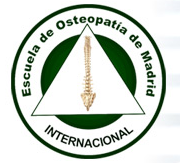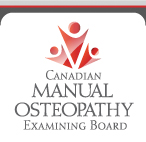"The germ is nothing. The milieu is everything." - Louis Pasteur, greatest proponent of the Germ Theory of Disease, on his deathbed
How can German New Medicine® explain the frightening reality of disease outbreaks - so-called contagious diseases or communicable diseases - when its fourth biological law insists that germs are not our enemies, but, more often than not, our helpers?
And if all diseases, according to German New Medicine® are caused by individual life experience, how is it that a disease outbreak brings the same symptoms to many people?
Lastly, since the biological laws of the German New Medicine® imply that the immune system doesn't exist in the way that we conventionally believe, then how is it that immunization programs have done so much to reduce the incidence of disease outbreaks over the last fifty years?
The Standard Philosophy of the Cause of Disease Outbreaks
The medical community is taught to understand disease outbreaks from the context of the Koch Postulates. These postulates were devised as proofs of Louis Pasteur's germ theory of disease in the late 19th Century, which proposes that many diseases are caused by microorganisms. Although highly controversial when first proposed, the germ theory of disease is now a cornerstone of modern medicine and clinical microbiology, and is the justification for hygienic practices as well as widespread use of antibiotics and vaccines.
The germ theory of disease has many flaws, as revealed from applying the proofs that are used to teach about the germ theory in disease outbreaks:
Koch Postulate #1 The microorganism must be found in abundance in all organisms suffering from the disease, but should not be found in healthy animals.
In the case of bacterial, protozoa and other parasite disease outbreaks, it is very often the case that the microorganisms are found in both ill people and in healthy ones. There have also been many studies done in which healthy people were exposed to microorganisms by breathing, skin contact, swallowing or even injection, but have not become ill.
In the case of viral disease outbreaks, the microorganisms have been found in neither sick, nor healthy organisms. Pathogenic viruses have never been isolated, characterized, and photographed.
Because of these realities, Koch did retract his first postulate. However, it has remained in the biology and medical textbooks. Once the germ of this idea overcame society's resistance, it went viral and created an epidemic of misunderstanding.
Koch Postulate #2 The microorganism must be isolated from a diseased organism and grown in pure culture.
During a disease outbreak, this certainly does not happen for the great majority of those suffering from the disease and, in the case of viral disease outbreaks, it has never happened at all. This process is merely what is used in medical tests to confirm a diagnosis. For example, if someone has a test that confirms they have chlamydia bacteria in their bodies, then this confirms a diagnosis... whether the person has any symptoms at all.
Koch Postulate #3 The cultured microorganism should cause disease when introduced into a healthy organism.
Here Koch weaseled out. Something constitutes a scientific proof only if it is verifiable 100% of the time. For example, we don't say that if gravity exists, objects should fall toward the ground. We say that gravity is a law and unsupported objects must fall toward the ground.
The reason why this postulate was amended this way is because numerous studies, even back in the 1890's, showed that cultured microorganisms, when introduced into healthy organisms, often didn't produce disease.
And it's often the case that when someone does have a reaction to these cultured microorganisms, they fall ill with symptoms quite different than those of the original disease, such as when people have severe reactions to vaccinations.
Koch Postulate #4 The microorganism must be reisolated from the inoculated, diseased experimental host and identified as being identical to the original specific causative agent.
This never happens, because it is against the law. No medical practitioner is allowed, for example, to remove microorganisms from an AIDS patient, grow them in a lab, and then inject them into a healthy patient, wait for the healthy person to get sick, remove microorganisms from that new AIDS patient, and grow them in a lab to prove that this microorganism caused the AIDS disease outbreak!
And, in the case of viruses, there has never been any isolation of any microorganism at all, let alone a proper application of Kochs Postulates.
Koch's Postulates Do Not Prove that Microorganisms Cause Disease Outbreaks!
Although Koch's Postulates are used to prove the germ theory of disease, they were originally devised to do just the opposite. And these postulates have done just that. It has been observed time and again for decades that disease outbreaks occur without the necessary requirement for affected individuals to have come into contact with one another or even with the necessary germs.
The idea that invisible beings with evil intent (or, as I'm fond of calling them, "cooties") cause disease has been around for many thousands of years in our cultural history. Before tiny, invisible microorganisms were blamed for disease, various forms of evil spirits or bad “humours” were thought to be responsible. These malevolent forces would sometimes afflict entire communities. This idea has always been a good explanation for why people sometimes get sick and die even when they don't deserve it.
No one suspected germs as disease-causing culprits until the 19th Century; the existence of germs wasn't known until the invention of the microscope in the 17th Century, and even then the little cooties were only a curiosity among scientific circles. Nobody knew what germs did or even where they came from, because the Theory of Evolution wasn't proposed until 1859.
Most scientists believed that germs came into existence directly from God like the rest of Creation. All living things, from microbes to mammoths, were plunked down by God in their fully-formed state (and then got busy having babies).
Some things - especially teeny ones like maggots or mice - were thought to arise spontaneously, formed out of the right combination of conditions. Today's predominant theories about cancer are still based in this exact logic.
However, after the introduction of the Theory of Evolution, everything changed. Darwin was challenged and insulted, but the ideas that he put forth were very useful indeed to enterprising scientists and industrialists.
Louis Pasteur was a driven man; three of his children died of typhoid fever. He is most famous for instituting higher standards of cleanliness in hospitals, for designing a cure for rabies, for inventing vaccinations that use samples of the diseases themselves, and for coming up with the (erroneous) idea of pathogenic viruses. He used his inventions - and the resulting fame - to strenuously advocate throughout Europe the idea of microbial cause of disease outbreaks.
Pasteur got his ideas of germs as the cause of contagious diseases from his observations of microorganisms in the process of fermentation. From that knowledge, he hypothesized that if germs are present in wine and milk when they go bad, then perhaps somehow germs cause the exact same thing to happen in humans.
Louis Pasteur's proof that germs cause contagious diseases rested entirely on his disproof of the theory of spontaneous generation of germs. In other words, he convinced the world that germs spread sickness by convincing the world that germs spread.
The medical industry seized the opportunity; Pasteur's inventions provided the basis for what has now become the giant pharmaceutical industry.
What Really Causes Contagious Diseases
If a second person becomes sick in a similar way to someone with whom they have been in contact, then the two people could have shared a million experiences, other than shared germs, that might have caused them both to come down with the same disease.
All diseases begin the same way: with a startling, serious, acute, and isolating conflict experience – something in your life for which you were completely unprepared. This is an iron rule, and it applies to cancer, to cholera, and even to candida. This is also the case whether the disease outbreak is
- a childhood disease,
- a so-called sexually-transmitted disease,
- seasonal respiratory infection,
-viral infection, or
- gastrointestinal disease
- a childhood disease,
- a so-called sexually-transmitted disease,
- seasonal respiratory infection,
-viral infection, or
- gastrointestinal disease
Germs do have their place in disease, but only as participants in the healing phase in helping excess tissues that are no longer needed to break down and be metabolized out of the body. Other than in the case of parasite infestation, germs are not the cause of disease outbreaks.
In the healing phase of any disease, we will experience fevers, tiredness, good appetite, and often significant water retention. With some diseases, in the healing phase we will experience vomiting, rashes, diarrhea, swollen lymph glands and so on. Depending on the tissues affected, this can appear on the skin, in an organ, or as a metabolic process.
These specific symptoms do not depend on the types of germs that we have in our bodies, they depend on the actions of our own brains as they go about the business of putting our bodies back to normal after dealing with a conflict situation.
Disease outbreaks occur for one simple reason: when a number of people live, eat, work, and sleep together, they tend to experience the same types of experiences. They can also spread conflicts to one another by the domino effect of one action leading to another action to another.
Then Why Immunize?When the dreaded polio epidemics of the first half of the Twentieth Century came to an end in the 1950's with the use of Jonas Salk's vaccine, the world breathed a sigh of relief and, since then, looks to vaccinations to provide us with immunity against disease outbreaks.
However, vaccination programs simply do not prevent disease outbreaks. There are other factors involved, including sanitation, a dramatically-increased level of wealth and standard of living in Western society, and some very important changes in the way diagnoses are made. If any of these factors changes, we will again see recurring epidemics in the developed part of the world.
The German New Medicine Healer
Go to Content
The German New Medicine Healer
Go to Content








 3:03
3:03
 Daniel Enriquez de Guevara
Daniel Enriquez de Guevara




























.jpg)






















0 comentarios :
Publicar un comentario